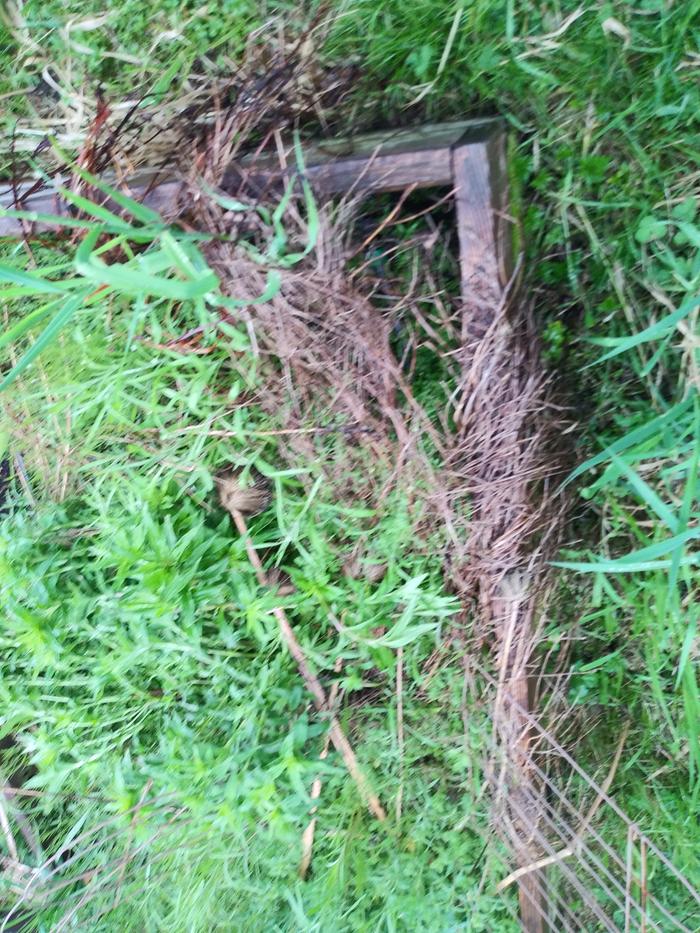





God gave us such a blessing in plants - some for medicine, some for eating (even "weeds"), and some just to give us joy!
 2
2




Invasive plants are Earth's way of insisting we notice her medicines. Stephen Herrod Buhner
Everyone learns what works by learning what doesn't work. Stephen Herrod Buhner
 2
2




I make a Maple Syrup instructional movie! Check it out HERE
SKIP books, get 'em while they're hot!!! Skills to Inherit Property
See me in a movie building a massive wood staircase:Low Tech Lab Movie
 6
6




 2
2




Mike Haasl wrote:My educated guess for a few of these would be:
Amaranth (I assume 1 per square) - sounds good
German Chamomile - 9 per square
Comfrey (non flowering I believe) - 1 plant for 4 to 9 squares for normal comfrey. Not sure what "non-flowering" comfrey is
Dandelion (I can't even get these rascals to germinate inside my grow tent!!) - 9 per square
Yarrow - 4 per square
I might be wrong but I don't worry too much about what shouldn't be planted by what. I'd rather go for diversity and hope it works out better, on average, in the end.
God gave us such a blessing in plants - some for medicine, some for eating (even "weeds"), and some just to give us joy!
 1
1




Jenny Wright wrote:Hi, I have a different climate than you (colder and wetter) so take my advice with that in mind.
My yarrow is over 1sf and got that big the first year. Same with my chamomile. They will both crowd out other plants.
St Johns Wort and nasturtiums really take up very little space and fit themselves in-between other plants really well. Great for interplanting.
Peppers and other nightshade plants use and need vertical space so give them 1sf but use up the ground layer around them with low growing plants, like leafy greens or your dandelions.
God gave us such a blessing in plants - some for medicine, some for eating (even "weeds"), and some just to give us joy!
 1
1




I make a Maple Syrup instructional movie! Check it out HERE
SKIP books, get 'em while they're hot!!! Skills to Inherit Property
See me in a movie building a massive wood staircase:Low Tech Lab Movie
 1
1




Mike Haasl wrote:Hey Sharon, I'm thinking of a much smaller chamomile so I'd go with Jenny's suggestion of a foot per plant.
So bocking 14 flowers wonderfully and the bees love it. And it doesn't set seed (as I understand). It will get big.
No idea on the lamb's quarters....
God gave us such a blessing in plants - some for medicine, some for eating (even "weeds"), and some just to give us joy!
 1
1




I make a Maple Syrup instructional movie! Check it out HERE
SKIP books, get 'em while they're hot!!! Skills to Inherit Property
See me in a movie building a massive wood staircase:Low Tech Lab Movie




Mike Haasl wrote:I bet it could be contained in something like a large peony ring to keep it more upright... If you wanted..
God gave us such a blessing in plants - some for medicine, some for eating (even "weeds"), and some just to give us joy!
 1
1





 2
2








Jenny Wright wrote:This is yarrow from last summer. It's been growing for about a month now. It dies back a little every winter. That's a little under 1 sf but it will get bigger and bushier this summer.
God gave us such a blessing in plants - some for medicine, some for eating (even "weeds"), and some just to give us joy!
 1
1




My farm and garden: https://trello.com/b/GqBLwdNh
My tacky designs on merch: https://www.redbubble.com/people/oldmobie/shop?asc=u&ref=account-nav-dropdown
 1
1




T Melville wrote:I think you've gotten good advice re: spacing above. I would only add that some of your plants are multi-purpose, and the spacing could change according to how you want to use them.
God gave us such a blessing in plants - some for medicine, some for eating (even "weeds"), and some just to give us joy!
 2
2




 1
1




Abraham Palma wrote:When plants are of different families, I let them touch, unless they get too crowded. When they are of the same family, I like to leave the space of a similar plant between them. For example, if a lettuce is 15 cm wide, I leave 30 cm from one lettuce to the next one, measuring from the trunks.
God gave us such a blessing in plants - some for medicine, some for eating (even "weeds"), and some just to give us joy!
 1
1




God gave us such a blessing in plants - some for medicine, some for eating (even "weeds"), and some just to give us joy!




God gave us such a blessing in plants - some for medicine, some for eating (even "weeds"), and some just to give us joy!




Sharon Elizabeth wrote:Anyone here know about the spacing for St John’s Wort (first year "creepers" for now, second year when upright - different spacing?)?
Also, about how large they get first year vs later years? Thanks all!




God gave us such a blessing in plants - some for medicine, some for eating (even "weeds"), and some just to give us joy!

|
Stay foolish to stay sane --Maxime Lagacé ... foolish tiny ad:
The new kickstarter is now live!
https://www.kickstarter.com/projects/paulwheaton/garden-cards
|





